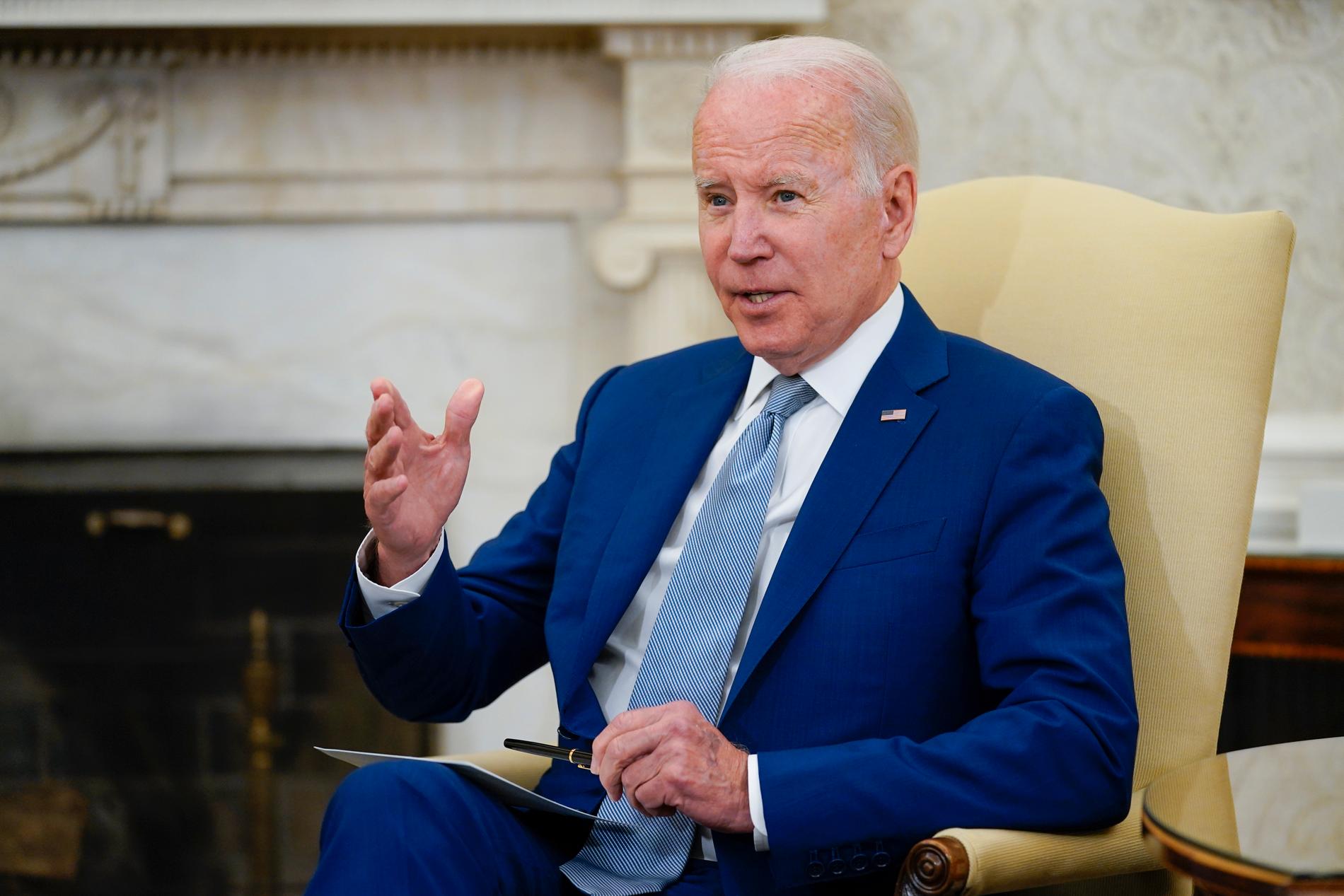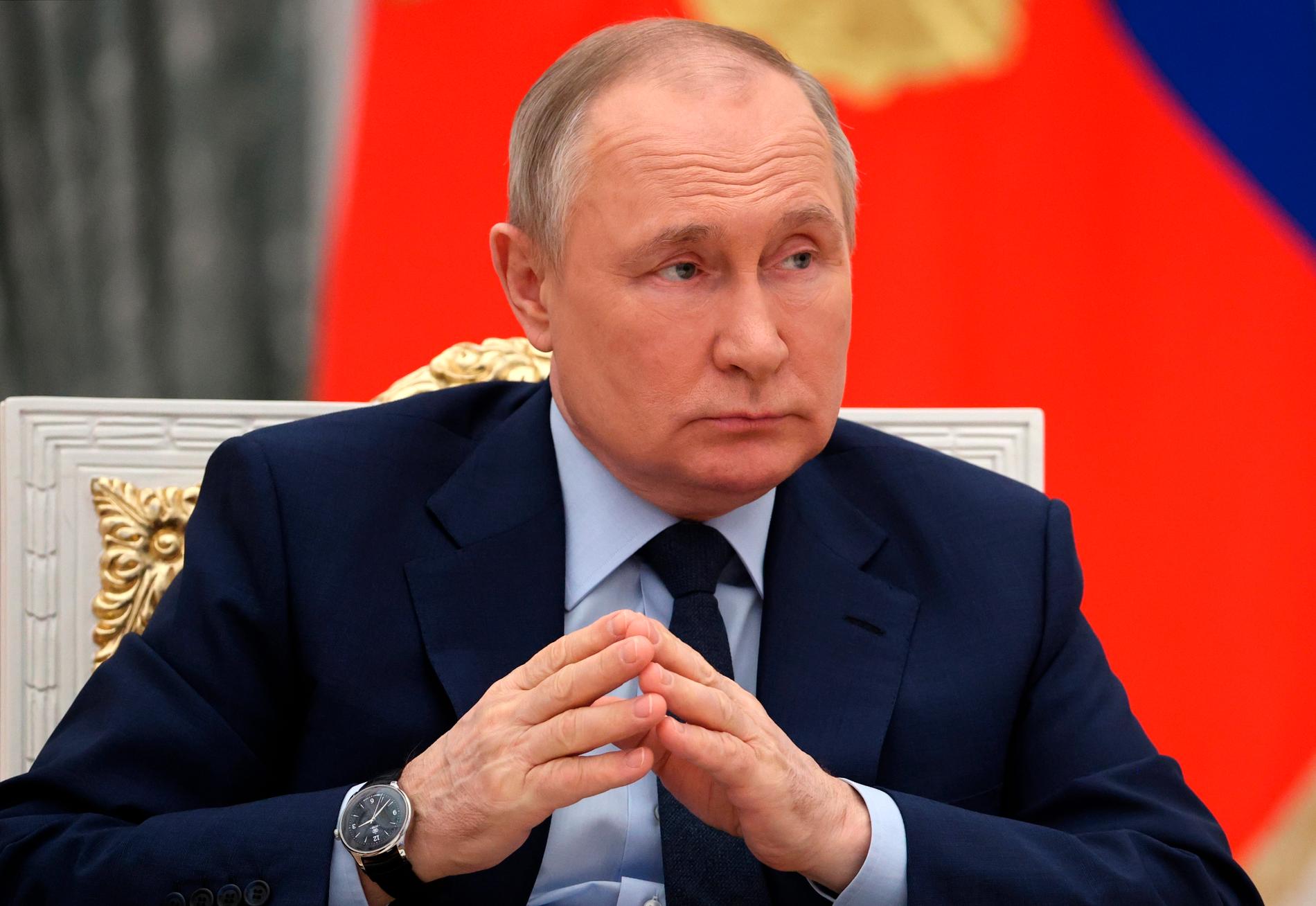Wolfgang Hansson
Is Biden confused or strategic?
Published: Less than 3 hours ago
This is a commentary text. Analysis and positions are the writer's.
COLUMNISTS
The other day, President Joe Biden ruled that the United States would send heavy artillery to Ukraine. Now he suddenly says yes.
This is far from the first time the president has contradicted himself.
Is he confused or is it a conscious strategy to appear more erratic?
When Biden was asked a few days ago whether the United States would send long-range artillery to Ukraine, he said no on the grounds that he did not want to risk using the weapons to attack targets inside Russia.
Following Biden's statement, the White House announced that no decisions had been made.
Today, the president justifies in an article in the New York Times why the United States still intends to send powerful artillery to Ukraine.
Confusion or strategy?

In an article in the New York Times, Joe Biden explains why the United States intends to send powerful artillery to Ukraine. Photo: Evan Vucci / AP
Just a few weeks ago, Biden promised at a press conference in Tokyo that the United States would defend Taiwan militarily if the island was subjected to an attack from China. It was a clear violation of the US official line to observe "strategic ambiguity" about how to act if China attacks the democratic island nation claimed by Xi Jinping.
The White House was quick to announce after Biden's announcement that the US line is fixed and that nothing has changed.
It's starting to become something of a pattern that Biden makes a statement which his staff is then forced to "clarify".
In many ways, it reinforces the image that the 79-year-old president is either a little confused or speaks first and then thinks.
Ever since Biden was elected, he has been haunted by rumors that he is demented or so old and confused that he is simply unfit to lead the world's superpower. A strong contributing factor is that he sometimes loses the thread when he speaks or stumbles on the words.
What message?
But there may also be another explanation. That Biden consciously says one thing and does something else to confuse opponents and to appear more unpredictable and less predictable. Something that now seems to be an asset in world politics.
First, Biden outwardly says no to sending heavy weapons to Ukraine to reassure the Russians that he does not want to start a war with Russia. Then he still sends the weapons but at the same time writes an article in the New York Times where he explains that the weapons should only be used against targets within the territory of Ukraine.
Next time, Putin does not really know what to expect from Biden. What message should you have listened to?
The Himars rocket range has a range of 80 kilometers. Photo: TT
Chinese President Xi Jinping gets the same message. Officially, the United States continues to maintain ambiguity in its stance on defending Taiwan. But when Biden repeatedly goes beyond that and says that the United States will defend Taiwan militarily, China must wonder what really matters. Maybe that's exactly what Biden wants to achieve.
He can not fail to note that both Representative Donald Trump and Russian President Putin have used the erraticness as a weapon with some success.
In the case of the war in Ukraine, Biden has a very difficult balancing act to go. How many weapons can he send to Ukraine without provoking a Russian reaction?
Biden wants to stop Putin from succeeding in his aggression at all costs, but without starting what he himself constantly warns of, a third world war.
Disguised warning
The New York Times article is an attempt to explain the US goal, but he also takes the opportunity to give Putin a disguised warning.
According to Biden, the US goal is very simple. They want to see a democratic, independent and prosperous Ukraine with the opportunity to deter attacks and defend itself.
- Therefore, I have decided that we will provide Ukraine with more advanced artillery systems and other weapons that make it possible to strike more precisely against important targets on the battlefield in Ukraine, Biden writes.
But a few lines further down, the president assures that the United States does not want a war between NATO and Russia.
During a visit to Europe a month after the outbreak of war, Biden said Putin could not be allowed to continue to rule Russia. It was interpreted by many as meaning that the United States was ready to participate in a regime change in the Kremlin.
Now Biden writes in his article that "even if I disagree with Putin, the United States will not try to overthrow him from power".

Russian President Vladimir Putin. Photo: Mikhail Tereshchenko / AP
At the same time, he is very clear that there are red lines for the United States that Putin must not cross.

Inga kommentarer:
Skicka en kommentar